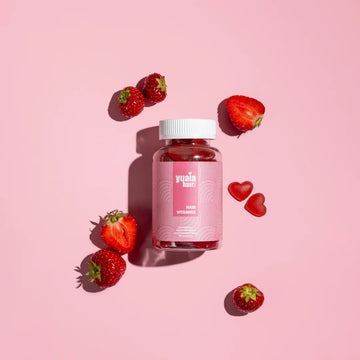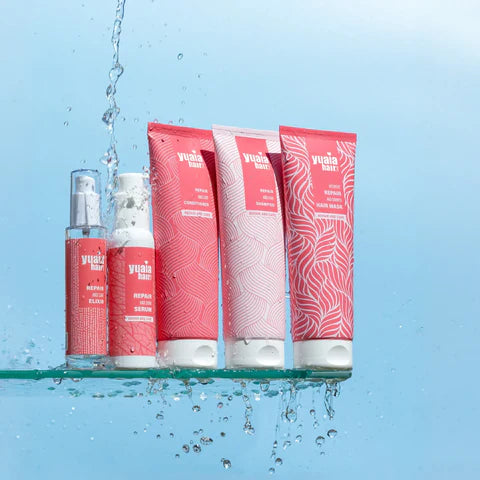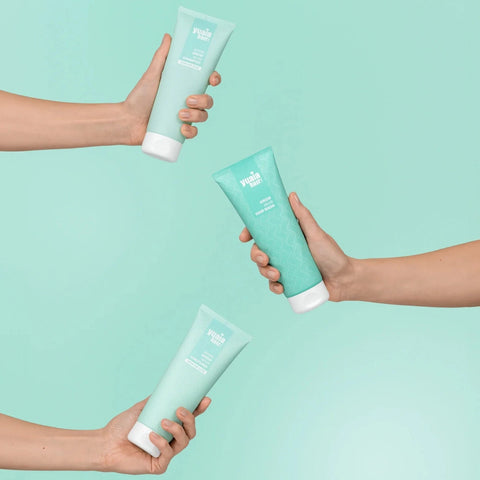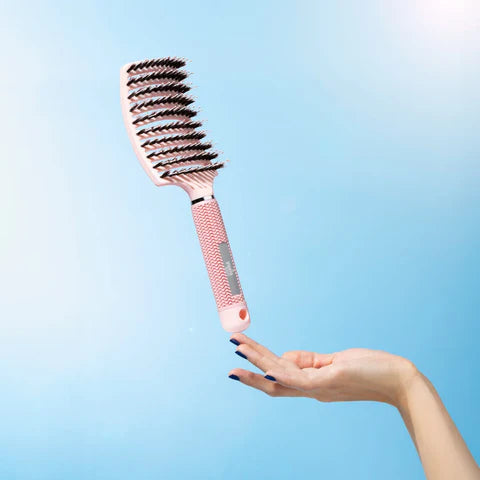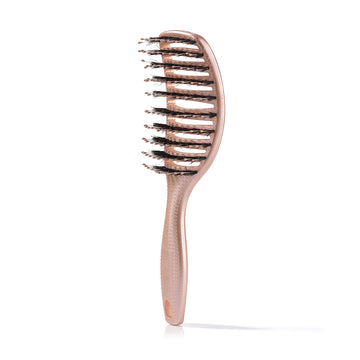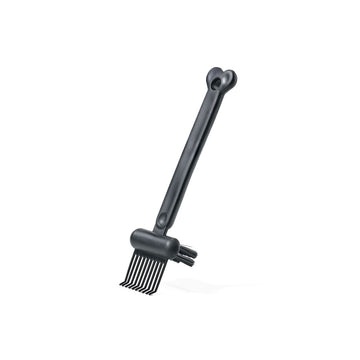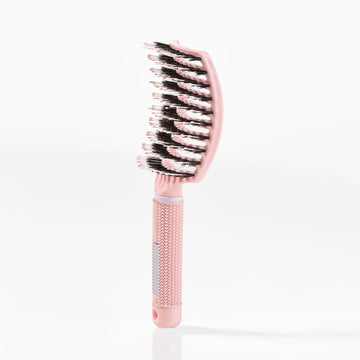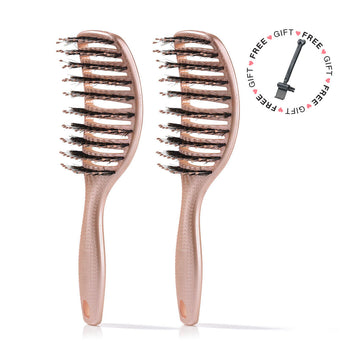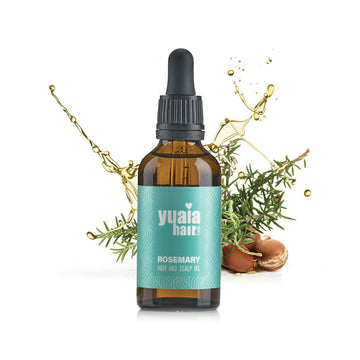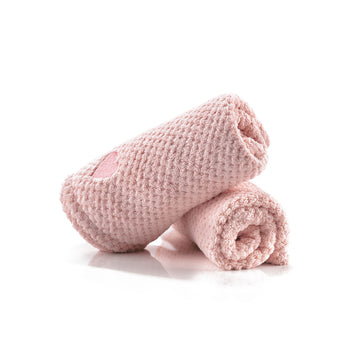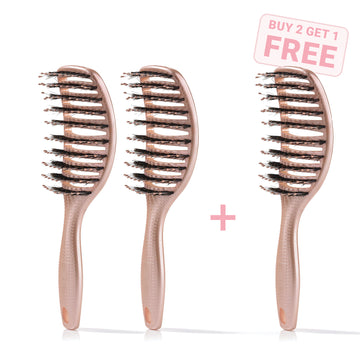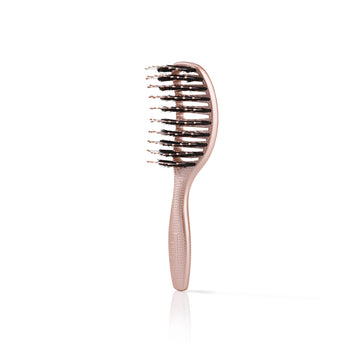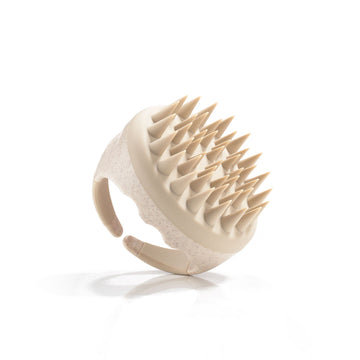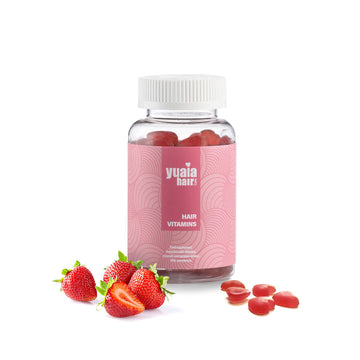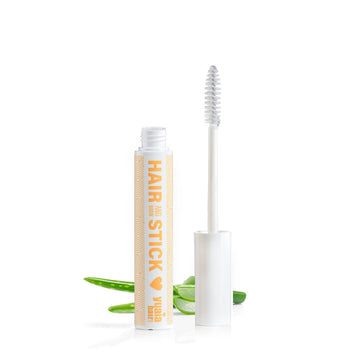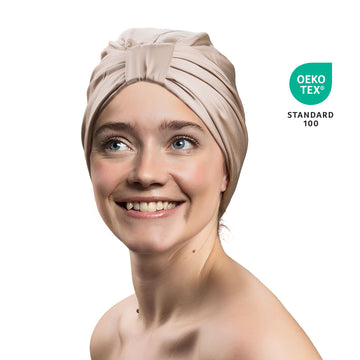Get a hairstyle that emphasizes volume
Your hairstyle can significantly affect whether your hair appears thin or not. Although you might think that long hair would make your hair look thicker because there’s more of it, that’s wrong! Longer hair can often weigh thin hair down, making it look even thinner because it loses volume at the roots. Instead, you should get a bob cut, which will frame the face and lighten the hair so it can better hold volume. This hairstyle helps create a feeling of fullness and is perfect for individuals with thin hair. If you have thin hair, it can be difficult to maintain volume if it gets longer than shoulder length. We have gathered a lot of good hairstyles for thin hair here.
Protect hair against the seasons
It can be hard on the hair when the seasons change. Therefore, it is important to adapt your hair care to the season you are in. For example, it is essential to ensure that the hair gets optimal care and nourishment during the cold winter months and plenty of moisture and protection during the drying summer heat. By adjusting your routine, you can protect thin hair from both drying out and damage from the sun's UV rays. You can compare it to your skin – it needs different products for different seasons.
Thinning hair treatment for women:
Treating thinning hair in women requires an understanding of both medical and natural methods that are scientifically backed. Here is an in-depth look at the most effective treatments:
Medical Treatments
Minoxidil: Minoxidil is an FDA-approved treatment for hair loss that has been shown to promote hair growth by increasing blood flow to hair follicles. Studies have shown that 2% and 5% minoxidil solutions are effective in treating androgenetic alopecia in women.
Finasteride: Finasteride is most commonly used for men, but some studies suggest that it may also be effective for women with hormonal hair loss. Finasteride works by inhibiting 5-alpha-reductase, an enzyme that converts testosterone into DHT, which is harmful to hair follicles
PRP (Platelet-Rich Plasma) Treatment: PRP treatment involves injecting platelet-rich plasma into the scalp, which can stimulate hair growth and improve hair follicle health. Clinical studies have shown that PRP can increase hair density and thickness in patients with hair loss (International Journal of Women's Dermatology).
Natural Methods
Essential Oils: Essential oils like rosemary and lavender oil have anti-inflammatory and circulation-enhancing properties that can stimulate hair growth. One study showed that rosemary oil is as effective as minoxidil in the treatment of androgenetic alopecia (Skinmed Dermatology).
Capilia Longa:
Capilia Longa is an ingredient made by Spanish biotech company Vytrus Biotech. The ingredient won the Hair Care Ingredient Category at the European Region of the Beauty Industry Awards in 2017. The ingredient consists of Curcuma Longa or turmeric. It has been shown in a study to reduce hair loss and hair density after 150 days of use.

Diet and Vitamins: A diet rich in vitamins such as biotin, vitamin D, iron and zinc is important for hair health. Biotin (vitamin B7) in particular is known to strengthen hair, and deficiency of this vitamin is associated with hair loss (Journal of Dermatological Treatment).
Aloe Vera: Aloe vera contains enzymes that promote healthy hair growth by cleansing hair follicles and reducing inflammation. Research shows that aloe vera can improve hair health and promote growth with regular use (International Journal of Trichology).
Ginseng: Ginseng is known to improve blood circulation and stimulate hair growth. Studies show that ginsenosides, the active components of ginseng, can promote hair growth by stimulating hair follicles and protecting them from damage (Journal of Ginseng Research).
Practical tips
Scalp massage is one of the best methods to stimulate hair growth if you have thin hair. Regular scalp massage increases blood circulation, which can stimulate the hair follicles and improve growth. This is especially beneficial for people with thin hair, as it helps activate dormant hair follicles. Use your fingers or a special scalp massager to massage your scalp daily for a few minutes (Journal of Clinical and Diagnostic Research).
Green tea can also be an effective remedy for thin hair. It contains antioxidants that can promote hair growth. Use green tea as a rinse after shampooing or drink it daily to improve hair health from within.
Coconut oil is an excellent natural treatment for thin hair because it is rich in fatty acids that penetrate deep into the hair follicles and moisturize the hair. Massage coconut oil into your scalp and leave it on overnight for deep conditioning. Research shows that coconut oil can reduce protein loss in hair and strengthen hair strands (Journal of Cosmetic Science).

Diet for thin hair
A healthy diet also contributes to maintaining normal hair growth. First and foremost, protein is important because hair mainly consists of keratin, which gives hair its strength and structure. Foods like eggs, chicken, and nuts can therefore help maintain normal hair.
Minerals such as iron and zinc, can also help you maintain normal hair and hair growth.
Including protein as well as these minerals in your diet can therefore be beneficial for anyone looking to maintain normal hair growth, especially for those struggling with thinning hair.
Read more
If you would like to read more about how to get thicker hair, you can read one of our other blog posts about how to get thicker hair here.
FAQ about Thin Hair in Women
How can I make my thin hair look thicker?
You can make your thin hair look thicker by using volumising shampoos and conditioners, trying styling products like mousse and dry shampoo, and choosing hairstyles that add volume, such as layered cuts or waves.
Are there vitamins that help with thinning hair?
Yes, vitamins like biotin and minerals like zinc can help maintain normal hair. Supplements specifically formulated for hair health can also be beneficial.
How do hormonal changes affect thinning hair in women?
Hormonal changes, such as those that occur during pregnancy, menopause or due to birth control pills, can affect the hair growth cycle and lead to thinning hair. Consulting with a doctor can help identify and treat hormonal causes of hair loss.
Can stress really cause thinning hair?
Yes, stress can contribute to hair loss by disrupting the hair growth cycle. Chronic stress can lead to conditions such as telogen effluvium, where a large portion of hair goes into the resting phase and falls out. Stress reduction techniques can help improve hair health.
What are the best hairstyles to hide thin hair?
Hairstyles like layered cuts, waves and curls can give the impression of thicker hair. Avoiding heavy, straight cuts and instead going for more texture can also help hide thinning hair.
Best products for thin hair
We want to help women and men who are upset about their thin hair, because every day should feel like a good hair day! That is why we have developed a number of products that promote growth and help with thinning hair. The series is called Grow & Glow and consists of a shampoo, conditioner, serum and hair mask. The products ingredients have shown up to 89% reduction in hair loss and 52% increase in hair density after 150 days of use. If you want to read more about the ingredient Capilia Longa and its results, read here.
Grow & Glow Shampoo
The best shampoo for thin hair is Grow & Glow Shampoo! Not only does it boost hair growth and density, but it also gives your hair instant volume. The formula contains Capilia Longa, an active ingredient that has been shown in studies to reduce hair loss by up to 89% and increase hair density by 52% after 150 days of use. Additionally, it provides a mild exfoliation for the scalp, removing dead skin cells and excess oil, ensuring your scalp remains healthy and balanced. It's also free from sulfates and silicones, meaning your hair won't be weighed down or exposed to harmful chemicals. You can read more about Grow & Glow Shampoo and how to use it here.
Grow & Glow Conditioner
Never forget to use conditioner after washing your hair! Conditioner seals the hair and provides it with care and moisture. Our Grow & Glow Conditioner is specially formulated to promote hair growth while strengthening and protecting your hair. For those with thin hair, using conditioner can be a challenge as it can make the hair feel greasy or weigh it down. However, like the rest of the series, this conditioner neither greases nor weighs down your hair! The conditioner contains Capilia Longa, which helps reduce hair loss and improve hair density, while leaving your hair soft and healthy. It’s enriched with moisturizing ingredients that provide intense hydration without negatively affecting hair volume. For the best results, it’s recommended to use the conditioner alongside the Grow & Glow Shampoo, as the two products complement each other and enhance the effect of Capilia Longa. You can read more about the conditioner here.

Grow & Glow Serum
For an extra boost to your hair growth, you can use Grow & Glow Serum. It contains the same growth-promoting ingredients as the rest of the series and is easily sprayed onto the scalp, then gently massaged in. This allows you to target specific areas where you want results, such as thinning parts in your parting or receding hairlines. The serum actively works to strengthen hair follicles and improve scalp health, helping you achieve thicker, healthier hair. For the best results, it’s recommended to combine the serum with Grow & Glow Shampoo and Conditioner. You can read more about the serum here.
Grow & Glow Hair Mask
The newest addition to the series is the Grow & Glow Hair Mask. Since the primary purpose of the series’ shampoo, conditioner, and serum is not to provide moisture, we’ve developed this hair mask to do just that while also promoting hair growth. Use it 1-2 times a week, depending on how often you wash your hair. After use, your hair will feel stronger, softer, and shinier, while also supporting healthy hair growth. You can read more about its fantastic properties here.
Hair vitamins
In addition to external hair care, we must not forget internal care. If you have thin hair and want to ensure that your body has the nutrients it needs to produce healthy hair, it’s a good idea to be mindful of whether you're getting enough vitamins and minerals through your diet. Our Hair Vitamins are a dietary supplement that contains biotin, which helps maintain normal hair. They have a delicious strawberry flavor, making them hard to forget. Regular use of these hair vitamins can support normal hair growth from within, which is important if you have thin hair. You can read more about our hair vitamins here.
 2-4 day UK delivery
2-4 day UK delivery
 25.000+ satisfied customers
25.000+ satisfied customers
 Satisfaction Guarantee
Satisfaction Guarantee

